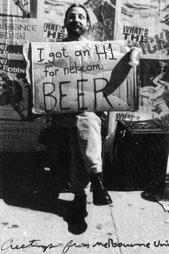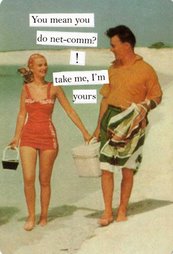
Net artists' use of misquotation, misdirection and interface breakdown is an effective way of critiquing the presumptuous faith many users have in its content, however, "continually employing this aesthetic can also make it familiar to spectators, and no more than a style" (White: 2006, 85).
White's cautionary assertion is an extension of my earlier arguments about the limitations net.art endures by virtue of being laden with semiotic depth and technological complexity - put another way, the price it pays to be cool. Cool, in Lui's formulation, is like an antagonism towards information. It is net.art's 'bad attitude', "engaged with the aesthetics of failure...shocking the spectator with breakdowns, techno-confusion, and illegibility in order to warn the spectator not to believe that the technology is highly functional (White, 2006: 95).
Cool is more effective when it is not burdened with the need to be user friendly or generative of any particular understanding. Although the net.art uploaded each Sunday onto the Postsecret blog is not aligned with any socio-political cause, it captures the rhetorical ellipsis Lui uses to define cool, the absence of readily digestible information. Contributors are directed to , 'Be brief - the fewer words used the better, Be creative - let the postcard be your canvas'. Postsecret reminds us that net.art is art on the net, the information cool of the knowledge workers, not all of whom are hell bent on publishing subversive socio-political content. Instead they may want to appropriate their workaday techniques, procedures, routines, protocols, and standards of information, and convert their banality into an experience of pure style, and in so doing parody corporate regimen (Lui, 2006: 195).



